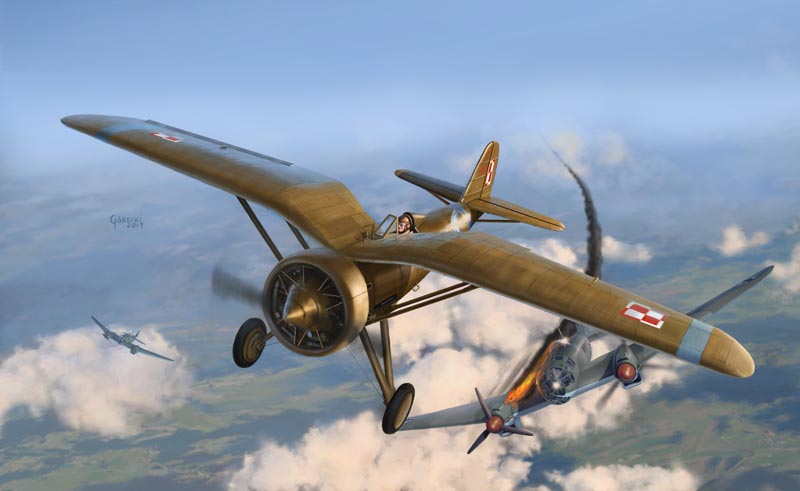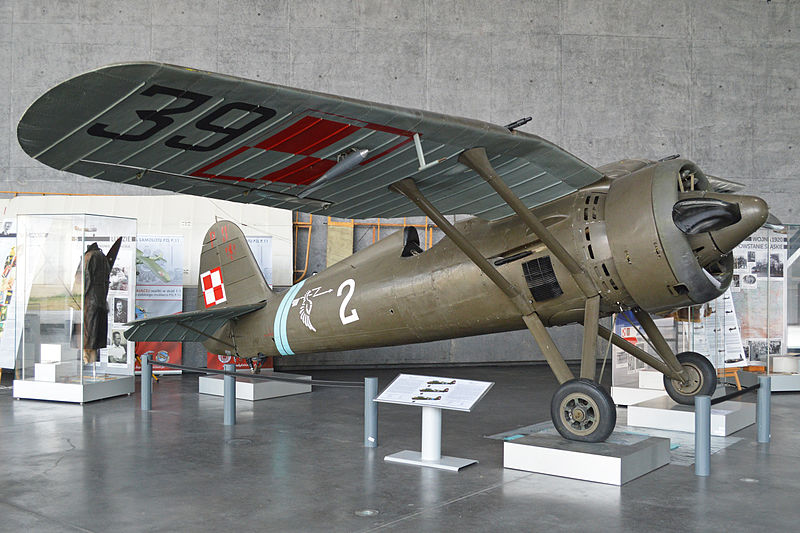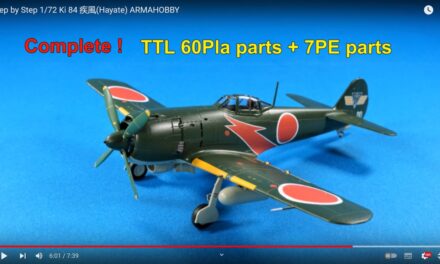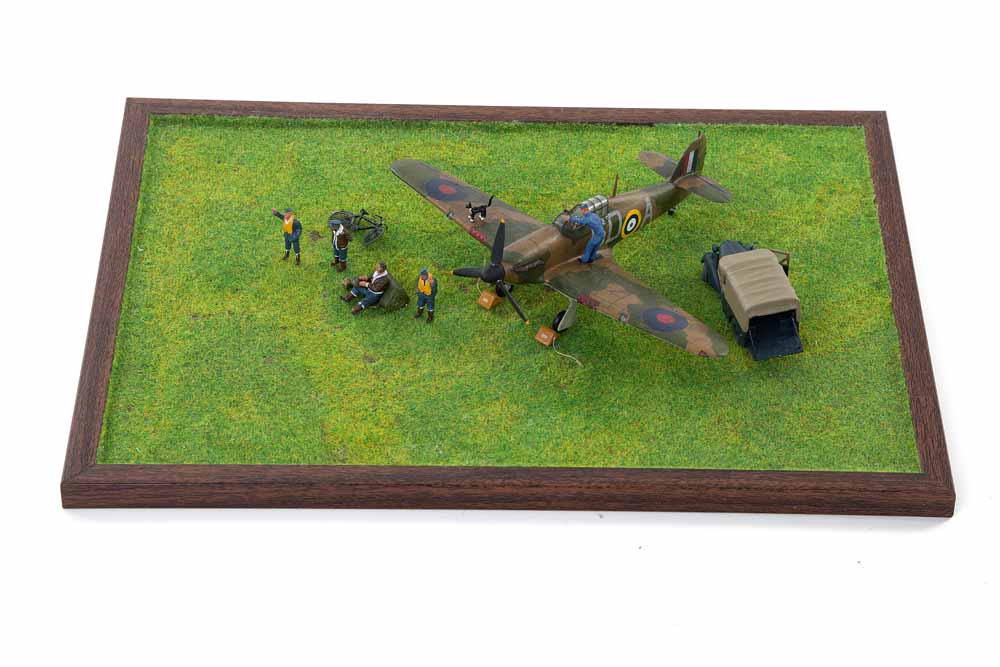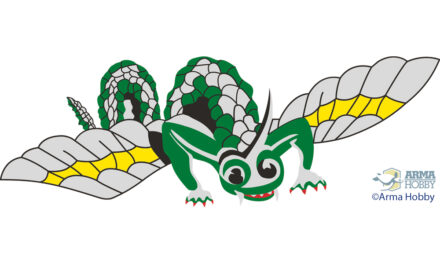The first of four PZL P.7a painting and marking schemes from the 1/72 Expert Set 1939 is probably the most awaited wartime scheme of 2nd Lieutenant Erwin Kawnik, deputy commander of the 123. Fighter Squadron from the Pursuit Brigade in defense of Warsaw. See the photos and read the story of the airplane and its pilot!
PZL P.7a, 123. Fighter Squadron from Cracow. Airplane of the 2nd Lieutenant Erwin Kawnik.
Victory over the Heinkels
Just before the WWII outbreak the 123. Squadron has been attached to the IV/1 Fighter Wing of the Pursuit Brigade. Since 1st September – with two PZL P.11 equipped Squadrons 113. and 114. – operated from Poniatów airfield near Warsaw. Squadron’s deputy commander 2nd Lieutenant Erwin Kawnik, piloting the “white 5”, has participated in the very first Wing’s combat sortie. Shortly before 9 a.m. two Squadrons flying the PZL P.11 were scrambled against the German air-raid. “11s” were joined with three-airplane flight of PZL P.7a, sent in order to test the older fighter’s combat performance. Its pilots were: Erwin Kawnik, Jerzy Czerniak and Stanisław Widlarz. The fighters took part in hectic skirmish North-East of Warsaw against formation of the 5.(K)/LG1 Heinkels 111 H, scoring one confirmed shared victory (Heinkel L1+KN) and one shared damaged Heinkel (L1+HN), which has later been written-off after force-landing with retracted undercarriage in the home airbase.
Erwin Kawnik in combat against Heinkel He 111, 1st September 1939. Model kit boxart by Marcin Górecki
Last combat of the „white 5”
The same day afternoon 2nd Lt. Kawnik showed great bravery and pilot skills when he continued the fight against the Messerschmitts Bf 110 from the 2.(Z)/LG1, despite his aileron controls have been shot off so he was able to use only rudder and elevators. Only more serious following enemy hits made Kawnik to perform the forced but safe landing. Damaged airplane has been sent to Warsaw-Okęcie airbase for repair, where on 8th September it was captured by Germans.
Erwin Kawnik’s airplane in the Warsaw-Okęcie airbase, September 1939. It was object of great interest of the German soldiers. Photo from dr Tomasz Kopański collection.
2nd Lt. Kawnik later fortunes
Since 2nd September, after the death of his commander Cpt. Mieczysław Olszewski, Erwin Kawnik became 123. Squadron commander. Evacuated through Romania to the West, he took part in Spring 1940 defence of France, where he scored two confirmed victories: German Junkers Ju 88 and Dornier Do 17. After fall of France the pilot went, with many other Polish aviators, to the Great Britain, where he joined the 308. “Cracow” Squadron. He lost his life during combat mission on a Spitfire on 2nd July 1941.
Cockpit close-up. Visible aircraft side number and squadron insignia. Zdjęcie z kolekcji dr Tomasza Kopańskiego
German „souvenirs from Warsaw”
Standing in front of the Warsaw-Okęcie airbase hangar Erwin Kawnik’s PZL P.7a is one of the most photographed Polish fighters of 1939. Apparently only slightly damaged airplane was great attraction for the German soldiers, who have enthusiastically photographed it. On these photos we can notice, what is not often, complete markings: red 6.85 military serial on the port side, big white “5” on the both sides, being number of the plane in the Squadron, and the black 281 K number on the wings undersurfaces typical for the Cracow 2nd Aviation Regiment, peacetime airbase of the 123. Squadron. The photos also show the Polish national markings (checkerboards) distribution (variant with the white fields on the wing undersurface) and the unit marking.
Other photo of the airplane. The underwing codes clearly visible. Photo from dr Tomasz Kopański collection.
Stripes of the 123. Squadron
Typical for the 123. Fighter Squadron are tactical markings – wing and fusealge stripes introduced soon after the unit’s creation. The earliest example is the photo from the Summer 1936 Warsaw Fighter Meeting, showing commander’s “white 1” with military serial 6.110, marked with single diagonal fuselage stripe and wide inverted “V” over the wing, most probably in light blue.
PZL P.7a airplanes during the Fighter Meeting in Warsaw, Summer 1936. Clearly visible the markings of the 123. Squadron commander’s “white 1” 6.110.
Erwin Kawnik’s PZL P.7a has slightly different markings: diagonal fuselage stripe is doubled, and over the both wings there are single straight stripes. We assume that its colour is, like on the “white 1”, light blue. Similar markings like the “white 5” had PZL P.7a with fuselage numbers “3” and “9”, while the stripes might have had different colours. “White 3” stripes on the black-and-white photos are genrally as light as Kawnik’s, but on the one photo (maybe photo-filter was used?) these look darker (yellow?). The “white 9” photographed by Germans in the Cracow airbase has stripes visibly darker (red?). Interesting, that the photos of the “white 1” made in September 1939 there is no trace of the stripes, and no even trace of overpainting (new paint over the number and unit marking is clearly visible).
We are not sure what these stripes meant, but we can assume that were connected with pilot’s functions in the unit: Erwin Kawnik was deputy-commander, so it can explain why his plane had second stripe in the same colour as the commander’s plane, while other pilots (flight commanders?) had the same shape of stripes in different colours. Similar fuselage stripes (but not on the wings!) has 121. Fighter Squadron PZL P.11c preserved in the Polish Aviation Museum in Cracow.
PZL P.11c from 121 Squadron, Polish Aviation Museum, Kraków. Photo by
Check out more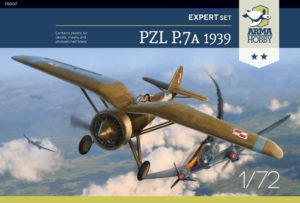
PZL aircraft model kits in Arma Hobby webstore
Modeller, son and father of a modeller. Loves digging through references and analysing old photographs. He builds aircraft, ship and vehicle models, the older the better. He has a weakness for Polish equipment, but does not despise the RAF, FAA and Great War topics. A journalist by training.
This post is also available in:
 polski
polski



